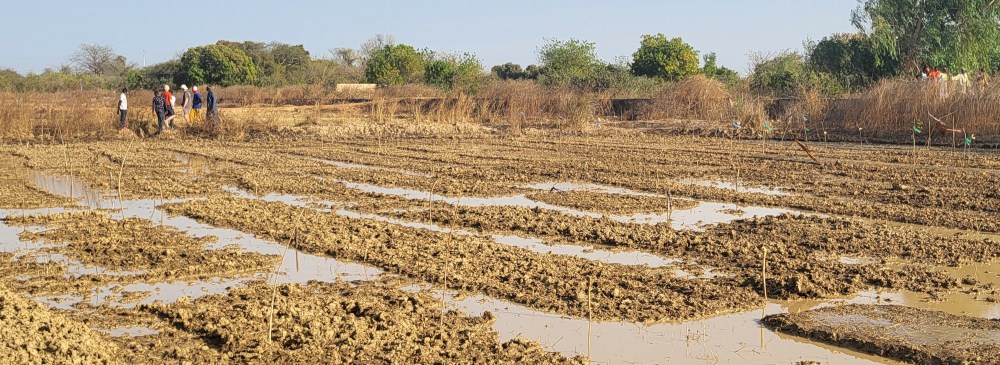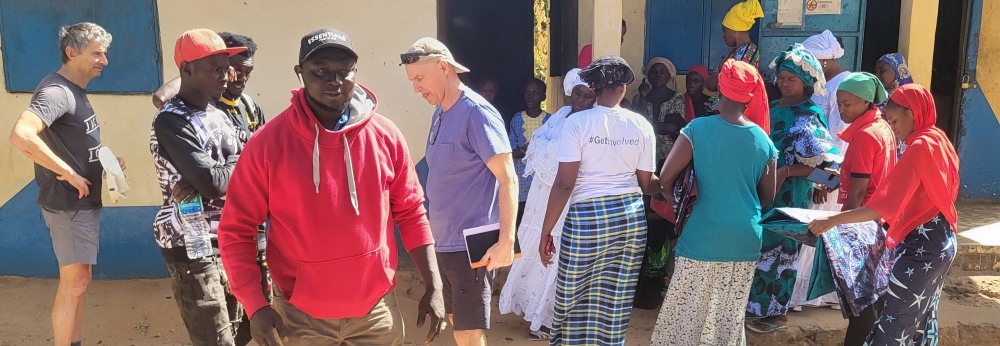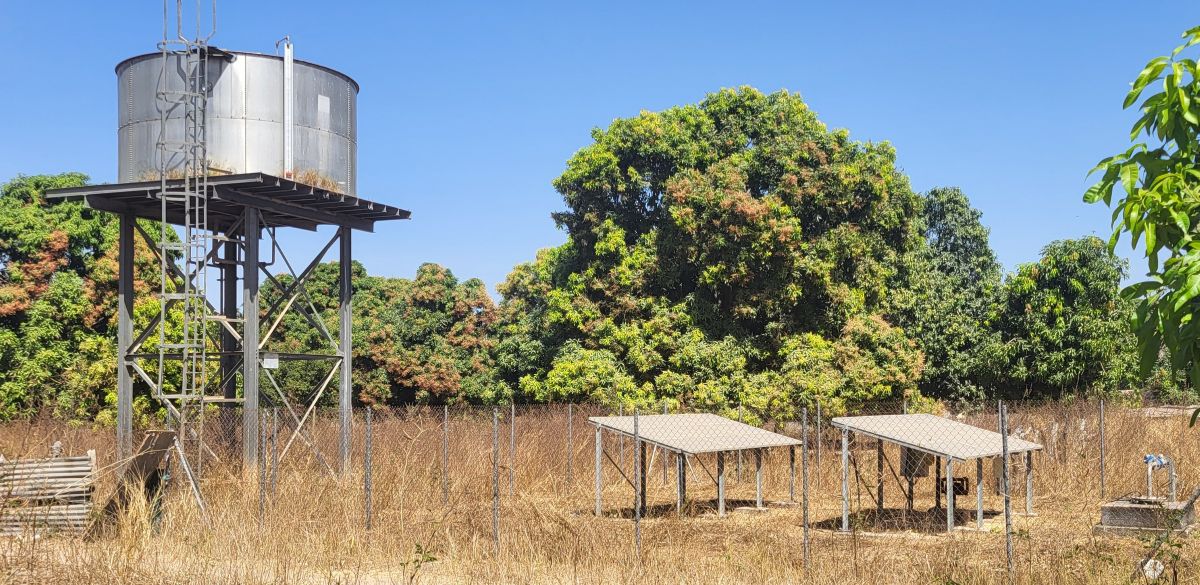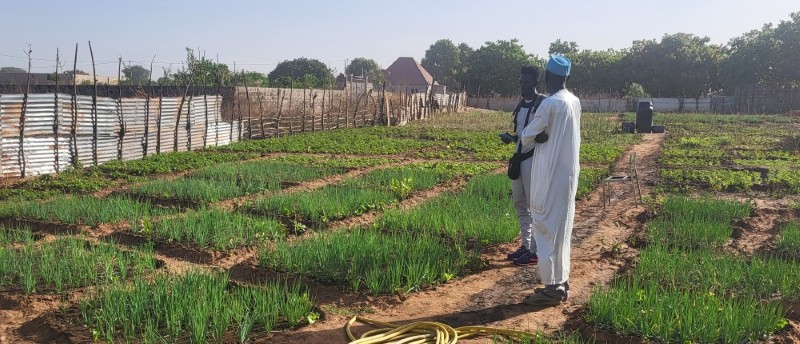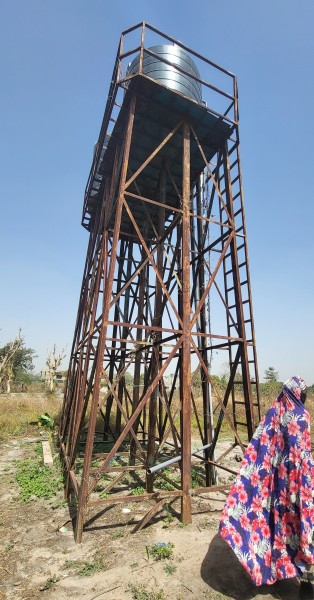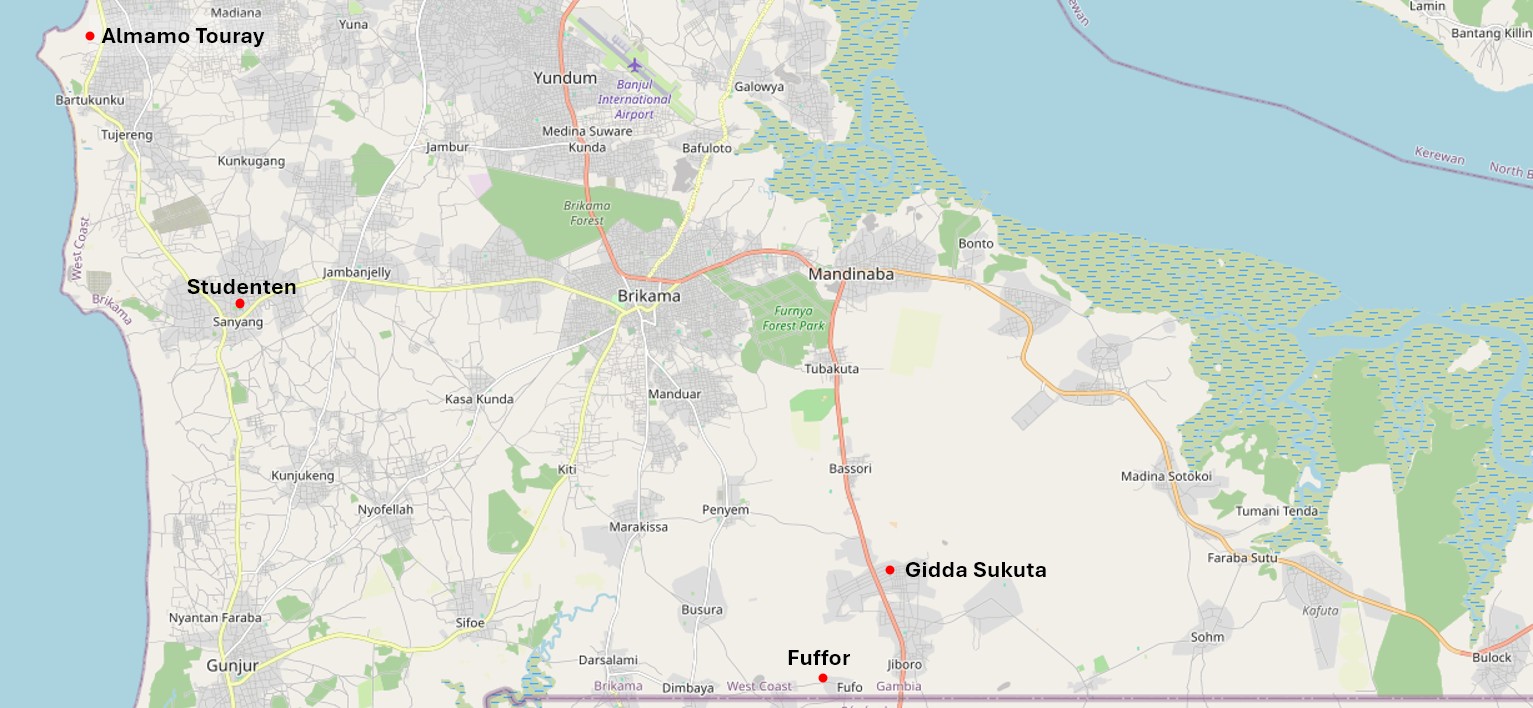Dirk Depoorter

Wednesday January 29th
We (Hedwig, Dirk and myself) have left for Gambia again. In addition to visiting the new water installations, our new school in Fuffor Village and determining the priorities for 2025, our priority is mainly to further shape the Gammol School Community and our rice project. You can read more about it later in the report.
Our journey goes smoothly, via Dakar to Banjul. We land exactly on time, at 19:10 in Banjul, the national airport of Gambia, where our permanent Gammol employees Omar and Lamin are waiting for us. It is always a pleasure to see them again. A warm hug follows!
We stay in the same lodge as last time, the Mama Africa Art Residence, a short hour's drive from the airport. It is nice to see a number of people who still work there.
We eat together with Omar and Lamin, and briefly discuss our program and the approach for the coming days. The first meeting is planned for this evening.
Rice Project Janjanbureh – Meeting Almamo Touray
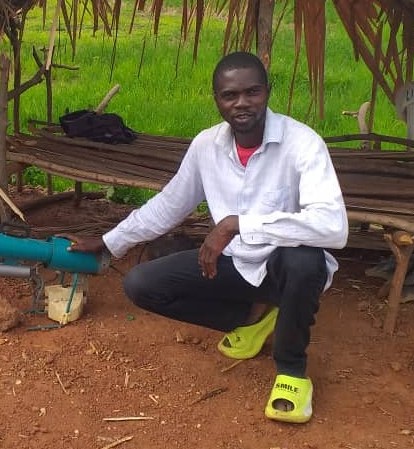
Almamo is the man we met last year during the visit to one of our water installations, and with whom we started our rice test project. He has a paid job as an IT specialist, but works on this project entirely voluntarily.
The purpose of the meeting this evening is to prepare our visit to the city of Janjanbureh, where we started our rice project. A city right on the Gambia River in the middle of Gambia, with small private rice fields adjacent, owned by the many families on site. With hundreds of hectares of uncultivated land adjacent with unlimited possibilities for growing rice.
Our first test was a failure: the harvest did not yield what we expected, the test turned out to be much more expensive than budgeted and the organization was not up and running due to unclear agreements. Result: a loss of around 6,000 euros. An expensive lesson, but fortunately we were able to learn a lot about the operation on site.
During our conversation with Almamo, we get more clarity about the reason why the harvest and productivity were so low. To summarize: the rainy season and a lack of machines, which made the labor costs far too high. Our follow-up also left much to be desired, due to unclear agreements. We go over the financial picture again with Almamo and make it clear how we see a possible follow-up, in which the involvement of the local population is an essential part of our plan.
We also agree on what we expect from our visit on site on Friday. Of course we want to see the rice fields on site, but we expect to get an explanation of how the Rice Committee of Janjanbureh sees the follow-up: what are the practical problems? What are their needs? How do they plan to organize themselves? And of course we also want to share our vision on this with them.
Ultimately, our intention is to make this a profitable activity, in which 80% of the profit goes back to the local population who grow the rice, and the remaining 20% can flow back to our other projects in Gambia. In any case, all profits will be reinvested in Gambia.
Almamo is motivated in any case. I myself am skeptical, emphasizing to Almamo that we should make better accounts for the next test.
It is late when we crawl into bed.😊
Thursday January 30th
Faala Village
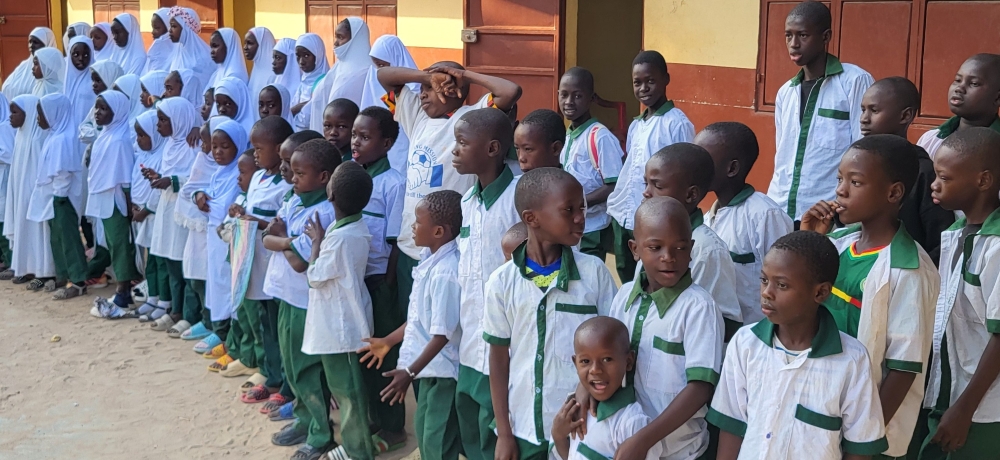
We start our tour at our school in Faala, which has been up and running for almost 2 years now, where we get more information about how the school works. There are 4 classes with room for 128 students, 32 per class. However, they currently have 160 students, between 4 and 10 years old, with the result that they divide the lessons into half days, morning and afternoon. There are 3 teachers and 1 nursery teacher. Something we have emphasized before is the need to test the students, to monitor their level. In this school this is done, with the teacher determining the level.
However, there is no follow-up of what happens to the students once they have left school. There is control of the schools by the government, but without any follow-up. When we ask about who can ultimately go to university, the answer is: those who have money, those who work, save and are ambitious, or the very best students who get a scholarship. Cost of uni: 90,000 dalasi per academic year. 1,200 euros, which doesn't seem like much, but it is the annual salary of a teacher on site...
So the teachers also play a very important role. And it is one of the limitations. To find a good teacher, you have to be able to pay them. And who provides the money: the women who grow their vegetables, often in community gardens. Initially for their own use, i.e. the whole family, and what they have left to sell on the markets. When we ask: "and what do the men do?", we get the laconic answer "making babies".
The needs in Faala: more water, so that they can work the gardens better and increase their yields. We are talking about a yield of 20 to 30,000 dalasi per year (270 to 400 €). They still have land in Faala that would be available for cultivation. It would be about 70 acres, good for 35 workable plots. With the possibility of a 2nd plot. This needs to be mapped out.
Apart from that, we decide that the old water installations (small water tank, low tower, concrete block construction) need to be replaced by our new installation, which will already solve the water shortage. In addition, only 1 toilet is working in the school, and this needs to be fixed, as well as building a chimney in the kitchen. These are things we had already discussed last year.
Leetulor - Gammol HQ Sanyang
We have an appointment with Mien and Liesbeth, the 2 nurses of our Leetulor wound care project. What they do is train people in the villages, so that they know the basic principles of treating wounds. We have seen photos of unkempt, festering wounds that make your stomach turn. Wounds that have not been treated for years. And those same wounds, after treatment! Saving limbs – and sometimes even lives.
Mien and Liesbeth arrived at the beginning of November and are leaving for Belgium today. During that period, they have done follow-up in 6 villages where there is at least 1 person who has received the training and can now get started themselves. And training has been given in 4 new villages. We had agreed with Omar that he would follow this up, and also choose the villages based on where we place our water installations. Clean water and clean wounds go hand in hand.
They explain to us how they work, from finding volunteers, training, delivering the right material, how many people they help with this... I asked them to also make a travel report, to share their experiences. Really very beautiful and special what Mien and Liesbeth realize and the personal investment they make for this. 3 months on location...
The reason for our meeting is to make a number of agreements together with Omar on how we can further coordinate the operation of Gammol and Leetulor.
Sanchaba School – Sanyang Village
There is no school today, but they still gathered the students to welcome us. 8 students give a speech with the most important message being the importance of education.
Gammol School Committee (GSC)

But the reason why we came to Sanchaba School is because we made an appointment with the people in charge of the 4 Gammol schools (Abuko, Sanchaba, Faala & Fuffor) to make progress with another important project for us, the Gammol School Committee (GSC). Something we launched earlier, but has not really gotten off the ground yet. Our medium-term goal is to improve the level of education.
And we have a number of questions:
- Last year we had a similar meeting, where a well-developed plan was presented to us. Where are they now with that?
- What do they need to really get started?
- What about the curricula, the tests, the exchange of experiences?
- How can Gammol support them additionally?
- What infrastructure is still missing?
- Who is prepared to take on the necessary responsibility here?
It has become an animated meeting. Present: a number of ‘teachers’ from each school, the ‘headmaster’ of Fuffor and Abuko, the ‘chairman of the school committee’ of Fuffor and Faala, and the secretary of Faala, who is also a VDC member of Sanyang. Yusupha Jassey, who does the talking, often to my annoyance.
I am not going to explain the entire discussion, but the essence is that this is not a ‘team’. The explanation we try to give initially meets with quite a bit of resistance, but rather from incomprehension. Until the Dalasi (€) of the chairman of Fuffor Village, Ensa Sanyang, falls. After which a passionate plea follows that is completely in line with what we want to achieve, together with them.
We conclude the animated meeting with the agreement that, based on what we have discussed, they would draw up a plan of action together:
- Working together as a team.
- Making a syllabus from grade 1 to 6.
- Creating a development & delivery plan for what teachers should teach in the different grades.
- How to exchange experiences.
- Fine-tuning the exams.
- What is the place of Arabic in our English Gammol schools?
Wait and see... Ensa gives us the impression that he has “got it” and seems to us to be well placed to play a role in this. We are clearly not yet at the level we want to be with the GSC. We realize that it will not be easy and that ideally there is someone who coordinates this. And then also budget for this.
Fulakunku
Our last stop for today. In Fulankunku we have installed an extension of the water capacity. From an old installation with a water container of 4,000 litres we have gone to 2 x 10,000 litres, so that there is now also clean water after sunset.
We are welcomed by the usual large committee, who thank us from the heart: “we cannot pay you, but we will pray for you for a long life”. In addition, we are asked for ‘more’. As the Alkalo vividly puts it: “a begger never has enough”. Confrontational, but for us “very honest and close to reality”. Or: “You found us hungry and you gave us food, but on the other side of the road they are still hungry”. To make it clear to us that more is needed. But they also take the initiative themselves: for example, they have bought 200 metres of pipes, possibly thanks to asking a small contribution from the community, with the aim of distributing the water more widely in the village. The problem here is that they would have to pull the pipes over a large track, which is not possible. We note the request, without making any promises. One of the many requests for ‘more’ that we expect.
Nine (!) people have taken the floor to thank Gammol and his sponsors and to make it clear that there are still needs. Dirk then takes the floor with the message that there are still many requests, that we have to set priorities and cannot promise anything. But also with the message that the expansion has come about because they have always maintained their installation well and because they have taken the good initiative to ask for a contribution within their community.
We say goodbye, but not before we are invited to become a member of their community, after which we are given soft drinks and fruit and a certificate to thank Gammol. We conclude with a prayer and song.
A first full and long day is over, to be continued...


